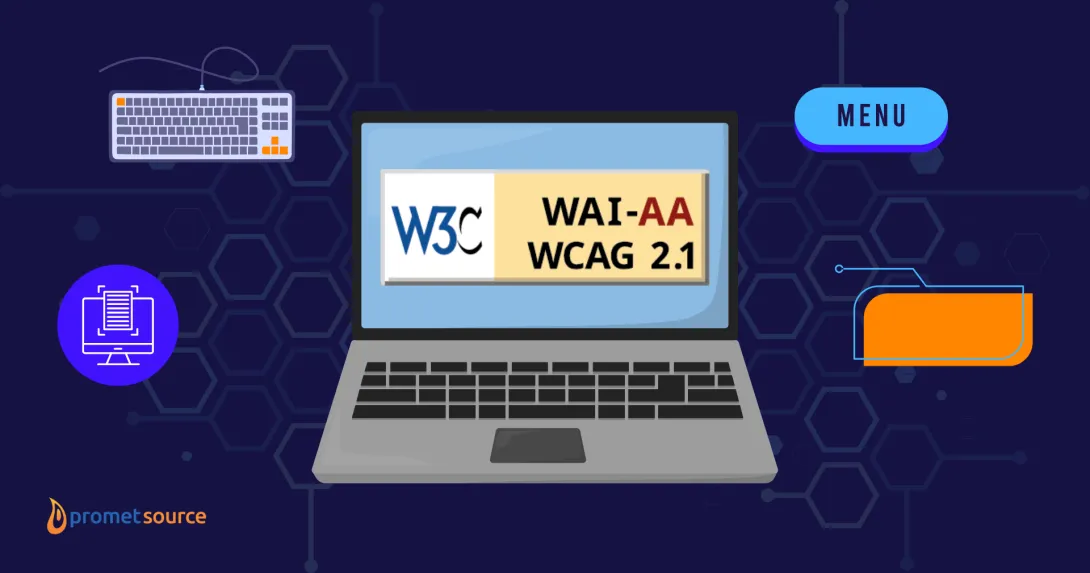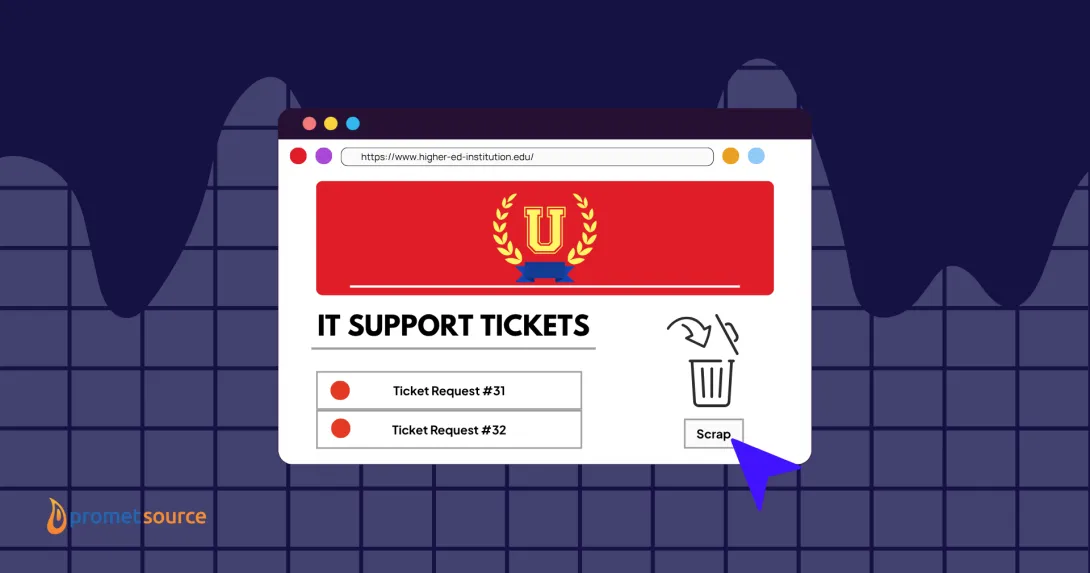Accessibility Remediation is a Must

If someone sues you because your website has accessibility issues, it usually means they need you to fix said issues.
Sadly, there will be those lawsuits where the complaint is triggered more by the desire of monetary compensation from a settlement than the present accessibility issues, but in either scenario, there has to be grounds for the complaint which means something needs remediation on your site.
Why are we stating the obvious? Because it's not obvious to all who find themselves with a letter or lawsuit claiming that their website is inaccessible and therefore discriminates against individuals with vision, hearing, and/or physical disabilities under ADA Title III.
Defenses against inaccessibility claims that have been seen in the news include:
- Websites aren’t included under ADA Title III
- Even if they are, it’s moot in this case
ADA Title III Defense?
On October 31, 2017, a letter was sent to The Honorable Jeff Sessions, Attorney General, United States Department of Justice, and signed by sixty-one Members of Congress, urging the DOJ "to restart the process of issuing regulatory guidance regarding the Internet under Title III of the ADA."
Restart? Yes.
In this same letter, the sixty-one Members of Congress reminds the Attorney General that the DOJ, in their 2010 ANPR, states:
"Although [DOJ] has been clear that the ADA applies to websites of private entities that meet the definition of ‘public accommodations,’ inconsistent court decisions, differing standards for determining Web accessibility, and repeated calls for [DOJ] action indicate remaining uncertainty regarding the applicability of the ADA to websites of entities."
Unfortunately, the 2010 Advance Notice of Proposed Rulemaking where "the Department encourages small entities to provide cost data on the potential economic impact of adopting a specific requirement for website accessibility and recommendations on less burdensome alternatives, with cost information," has been given a status of inactive under Trump’s Unified Regulatory Agenda released in July 2017.
On July 19, 2018, another letter was sent to the 'The Honorable Jefferson B. Sessions', III by the Attorneys General of 18 states and the District of Columbia on the same topic sent by the Members of Congress.
If the DOJ recognizes that Title III is unclear, is it no wonder that site owners still try to claim that websites aren't included in Title III? No.
However, as you read about website accessibility cases in the news, it’s clear that the courts have decided that it does. Whether it was the Winn Dixie case in June of 2017 that set the precedence or that the plaintiff, in this case, has brought other similar suits since then, it doesn’t matter.
Compliance with the World Wide Web Consortium’s Web Content Accessibility Guidelines (WCAG), level AA is here to stay. Whether its WCAG version 2.0 or the recent 2.1, courts are ruling that these guidelines must be met.
So, what other defense can a business make to stop a website accessibility lawsuit, other than remediating the problem?
Moot Defense?
If you aren’t a lawyer, you might be scratching your head right now. Moot? Don’t worry, you’re not the only one. Let’s start with a simple example.
Carroll v. New People's Bank, Inc.
Filed in November, 2017 and terminated in April, 2018. First, please note the length of time required to adjudicate this case, only to have it dismissed. Here is a brief look at what transpired.
- "NPB's website contains accessibility barriers, which Carroll alleges prevent him from using screen reading software to freely navigate the site."
- "NPB informed Carroll of its intent to develop a new website by letter in November 2017, prior to the filing of his lawsuit. In this letter, NPB stated that they had "voluntarily made a number of improvements" to the website and had "retained a third-party to develop a new website for the bank which [would] further improve [the website's] accessibility and client service feature-set.""
- "Carroll argues that this new website does not render his claim moot because there is no guarantee that NPB will not revert to its former inaccessible website in the future."
- "NPB has moved to dismiss the Complaint for lack of standing."
- "NPB contends that, in any event, Carroll's claim is now moot based on its voluntary upgrades made to the website after this action was filed, which upgrades Carroll does not dispute."
Obviously, there’s more to this case than the snippets provided here. In fact, the case is interesting reading. Bottomline, NPB responded to Carrol’s letter, fixed the site, and the case was dismissed.
Haynes v. Hooters of America, LLC
This next case isn’t as straightforward as Carroll’s claim is moot. This one is about getting sued twice for the same issue. Here is a brief look at the ruling.
- "On April 4, 2017, Haynes sued Hooters in the United States District Court for the Southern District of Florida …" In short, Haynes wanted Hooters to fix the accessibility issues on their site.
- "Prior to the initiation of Haynes’ suit, on August 22, 2016, a different plaintiff filed a separate and nearly identical website-inaccessibility lawsuit against Hooters. Less than three weeks after the filing of that suit, the parties reached an agreement and settled their dispute ("Gomez Settlement Agreement")..."
- "Hooters moved to dismiss Haynes’ suit, arguing that, because Hooters was in the process of actively implementing a remediation plan for its website, pursuant to the Gomez Settlement Agreement, there was no live case or controversy and Haynes’ claim must be dismissed on the mootness grounds.” They had until September 2018 to fix their site.
- The district court agreed with Hooters and dismissed the case.
- But, Haynes didn’t agree, and neither did the Eleventh Circuit in their June 2018 ruling that “the case is not moot.”
Again, there is more to this case that is briefly summarized here. In short, Haynes had no way to know or to ensure that the remedies being planned would resolve the issues he was having with the site. Therefore, his claim was valid. Yes, you can get sued twice for the same thing if the issue is still present on your site.
Read: Web Accessibility Overlays Do Not Work
Lessons Learned
There are four lessons worth mentioning.
1. Audit Your Site Before You Get Sued
There is no argument that it’s going to cost you money to have your site audited appropriately for accessibility issues and ultimately remediated if problems exist. You could wait to see if you get caught but at that point, your costs include legal fees plus the audit and remediation.
Other costs include the negative publicity that can ensue. Web accessibility cases are hot topics and will remain so due to the lack of specific ADA regulations from the DOJ. People want to know how courts are ruling and that means numerous blog posts and speculation where your business’ name is spattered over the Internet.
2. Website Accessibility Insurance
Ensure your site. You heard right. Insurance. You have a site right now. You think all is well. You have processes in place that audit content as it goes live to ensure there aren’t any issues. You have run an automated tool on sample pages and everything looks okay.
However, as a person that drives a car or owns a home knows, you can never predict when something is going to go wrong. That’s why you have insurance.
Don’t believe that such insurance exists? Think again. Beazley Insurance is working with Promet Source to offer insurance against ADA website compliance claims. Said policy includes up to $25,000 coverage for an accessibility audit and remediation if someone files a claim against you.
"In 2017, 7,663 ADA Title III lawsuits were filed in federal court — 1,062 more than in 2016."
"If ADA Title III federal lawsuit numbers continue to be filed at the current pace, 2018’s total will exceed 2017 by 30%, fueled largely by website accessibility lawsuit continued growth."
Add to these numbers the cases brought in state courts and it’s not hard to believe that you could get sued in the near future.
3. Move Quickly
If you get a letter, move quickly to remediate those items specifically noted. In the case of Carroll v. New People’s Bank, even if Carroll could prove standing, in the long run, NPB responded quickly and fixed the issues in the letter.
Has Hooters moved quickly? How much money do you think Hooters could have saved in legal fees by taking down their inaccessible website and quickly replacing it with a simple, accessible website until their new site could be designed, developed, and launched? You decide.
4. Quick Might Not Be Fast Enough
It’s clear that people with disabilities are no longer hesitating to file suit for an inaccessible website. Whether they have standing or not, you could be faced with one lawsuit after another until you can audit your site and remediate it accordingly.
And, given the findings in Haynes v. Hooters of America, LLC, the courts might let each lawsuit stand. So, circling back to the first lesson, have your site audited using automated and manual testing, get it fixed if issues are found.
Conclusion
Until the DOJ responds to the pleas of lawmakers across the nation to create specific regulations regarding website accessibility, courts will continue to review other cases to determine what’s moot or not. Don’t wait to find out. Get audited. Fix the issues.
If you don’t know what to do, Promet’s Accessibility Audit, Remediation, and Training Roadmap could help you avoid future lawsuits or liability, and could even help you successfully end a current lawsuit you may be facing.
DISCLAIMER: This article is not intended to constitute or replace proper legal advice. Should you have any legal questions regarding digital accessibility, contact a lawyer or legal specialist with knowledge in this area.
Get our newsletter
Get weekly Drupal and AI technology advancement news, pro tips, ideas, insights, and more.





